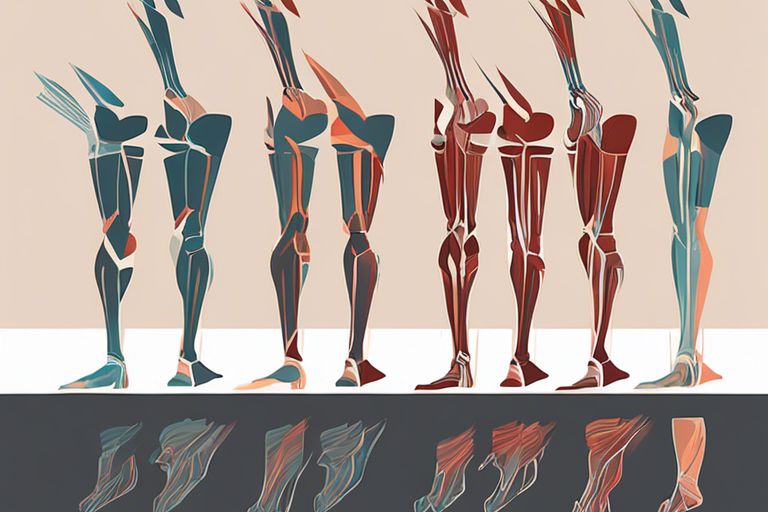Did you know that the relationship between walking and metabolism is crucial for your overall health? Walking is one of the best ways to boost your metabolism and maintain a healthy weight. When you walk, your body burns calories and increases your metabolic rate, which can help you lose weight and improve your overall health. In fact, just 30 minutes of walking a day can have a significant impact on your metabolism. On the other hand, a sedentary lifestyle can slow down your metabolism and lead to weight gain and various health issues. By incorporating regular walking into your daily routine, you can keep your metabolism revved up and maintain a healthy body weight.
Key Takeaways:
- Walking increases metabolism: Walking at a brisk pace can boost metabolism and help burn calories. It increases muscle activity and oxygen consumption, leading to a higher metabolic rate.
- Regular walking can improve metabolic health: Consistent walking can help regulate blood sugar levels, reduce body fat, and improve insulin sensitivity, all of which contribute to a healthy metabolism.
- Long-term effects of walking on metabolism: Regular walking can lead to long-term improvements in metabolism, including increased fat oxidation and a higher resting metabolic rate, helping to maintain a healthy weight.
Understanding Metabolism
One of the most important processes in your body is metabolism. It’s the way your body converts the food you eat into energy, which is used for every single function in your body. Your metabolism is constantly working, even when you’re at rest, to keep your body functioning properly. Understanding how your metabolism works can have a significant impact on your overall health.
Basic Metabolic Processes
Your metabolism consists of two main processes: anabolism and catabolism. Anabolism is the process of building up compounds in your body, such as proteins and fats, from smaller molecules. This process requires energy. On the other hand, catabolism is the breakdown of complex molecules into simpler ones, releasing energy in the process. Both of these processes are essential for maintaining the balance of nutrients and energy in your body.
How Metabolism Works in the Body
Metabolism is a complex process that involves numerous chemical reactions to keep your body functioning. When you eat, your body breaks down the food into its basic components – carbohydrates, proteins, and fats. These components are then processed and used for different bodily functions. The rate at which your body performs these processes is directly related to your metabolism. Additionally, your metabolism is influenced by various factors such as your age, gender, genetics, and muscle mass. Having a higher metabolism can help you burn more calories, whereas having a slower metabolism can lead to weight gain.
The Impact of Walking on Metabolism
While you may think of metabolism as something that is influenced only by diet and exercise, walking can also have a significant impact. In fact, the simple act of walking can have both immediate and long-term effects on your metabolism.
Immediate Effects of Walking
When you engage in walking, especially brisk walking, your metabolism gets a boost. This is because physical activity like walking increases your body’s demand for energy. As a result, your metabolic rate increases, leading to a temporary spike in calorie burning. This immediate increase in metabolism can last for several hours after you’ve finished your walk, depending on the intensity and duration of your activity. So, even a short walk can provide a quick metabolic boost, helping you burn more calories throughout the day.
Long-Term Metabolic Changes from Regular Walking
Regular walking can also lead to long-term changes in your metabolism. Over time, incorporating walking into your daily routine can help improve your body’s ability to efficiently use energy. This can lead to a higher resting metabolic rate, meaning that you burn more calories even when you’re at rest. Additionally, walking can help you build lean muscle mass, which can further enhance your metabolism. This means that the more you walk, the more you can positively influence your metabolic health and overall calorie expenditure.
Walking Intensity and Metabolic Rate
After you start walking, your metabolic rate increases, meaning your body burns more calories. The intensity of your walking has a direct impact on your metabolic rate. The faster you walk, the more calories you burn. This is because higher intensity activities require more energy, thus increasing your metabolic rate. So if you want to boost your metabolism, consider increasing the intensity of your walks.
Comparing Different Walking Speeds and Inclines
When comparing different walking speeds and inclines, it’s important to understand how they affect your metabolic rate. Walking at a faster pace or on an incline requires more effort and energy, which in turn increases your metabolic rate. Below is a comparison of the calories burned per hour for a 154-pound individual at different walking speeds and inclines:
| Walking Speed | Calories Burned per Hour |
| 2 mph (slow pace) | 204 calories |
| 3.5 mph (brisk pace) | 314 calories |
| 5 mph (fast pace) | 606 calories |
| 7.5% incline | 518 calories |
Interval Walking and Metabolic Implications
Interval walking, which involves alternating between periods of high and low intensity, can have a significant impact on your metabolic rate. By incorporating short bursts of high-intensity walking into your routine, you can increase your metabolism and continue to burn calories even after you’ve finished walking. This is known as the afterburn effect, where your body continues to burn calories at an elevated rate post-exercise. Interval walking can be an effective way to boost your metabolism and improve your overall fitness.

Optimizing Walking Habits for Metabolic Health
Now that you understand the link between walking and metabolism, it’s time to optimize your walking habits for improved metabolic health. By making some simple adjustments to your walking routine and integrating it into a holistic metabolic health plan, you can maximize the benefits for your metabolism and overall well-being.
Best Practices for Walking Routines
When it comes to optimizing your walking habits for metabolic health, consistency is key. Aim for at least 30 minutes of brisk walking most days of the week. This will help to keep your metabolism revved up and your blood sugar levels in check. Additionally, focus on incorporating interval training into your walks. This can be as simple as alternating between periods of brisk walking and slower-paced walking. This approach has been shown to be particularly effective at boosting metabolism and burning more calories.
Integrating Walking into a Holistic Metabolic Health Plan
Walking is a great way to complement other aspects of a holistic metabolic health plan. By incorporating strength training and flexibility exercises into your routine, you can further enhance your metabolic health. Strength training helps to build muscle, which in turn can increase your resting metabolic rate. In addition, focusing on flexibility exercises such as yoga can help to reduce stress, which can have a positive impact on your metabolism. Remember to also pay attention to your diet, ensuring that you are fueling your body with the nutrients it needs to support a healthy metabolism.
By following these best practices and integrating walking into a holistic metabolic health plan, you can optimize this simple yet powerful form of exercise for maximum benefits to your metabolism. Remember, consistency is key, so make it a point to prioritize your walking routine as part of your overall approach to metabolic health.
Conclusion: The Relationship between Walking and Metabolism
Now that you understand the connection between walking and metabolism, it is clear that regular physical activity, such as walking, plays a crucial role in maintaining a healthy metabolic rate. By incorporating daily walks into your routine, you can boost your metabolism, increase energy expenditure, and ultimately support weight management and overall health. It’s important to remember that the relationship between walking and metabolism is a two-way street – the more you walk, the more efficient your metabolism becomes, and the more efficient your metabolism, the more energy and endurance you have for walking. So, make sure to prioritize walking as an integral part of your lifestyle in order to optimize your metabolic function and overall well-being.




